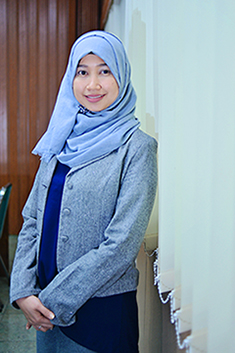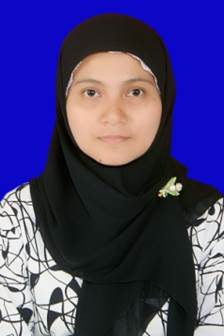Optimasi Kadar Awal, Waktu Kontak dan Berat Biomassa pada Proses Biosorpsi Cu2+ Menggunakan Cangkang Lorjuk
Downloads
Pendahuluan: Cangkang kerang pisau (Solen vagina) dapat menyebabkan pencemaran lingkungan sekitarnya, tetapi berpotensi untuk dimanfaatkan menjadi biosorben dalam penyerapan logam berat khususnya Cu karena umumnya cangkang kerang mengandung CaCO3 dan kitin. Beberapa variabel yang berperan dalam proses biosorpsi, antara lain: konsentrasi awal logam, massa biosorben, dan waktu kontak. Tujuan: Untukmenentukan pengaruh konsentrasi awal Cu (II), massa biosorben, dan waktu kontak terhadap proses biosorpsi melalui data persentase efisiensi dan kapasitas adsorpsi. Metode: Proses biosorpsi dilakukan dalam berbagai variasi parameter dengan memasukkan biosorben dan larutan Cu (II) dalam kolom, sesuai masing-masing variasi yang telah ditentukan dan dilakukan penyaringan. Pengukuran kadar Cu (II) secara kuantitatif dari hasil proses biosorpsi menggunakan Atomic Absorption Spectroscopy (AAS). Hasil: Hasil penelitian menunjukkan bahwa biosorben cangkang lorjuk mengandung Cu (II) 0,0220 mg/g. Kadar Cu (II) dalam cangkang tersebut digunakan sebagai faktor koreksi. Hasil optimal untuk parameter konsentrasi awal Cu (II) adalah 100 mg/L dengan persentase efisiensi (98,47 + 0,19)% dan kapasitas adsorpsi (630,37 + 1,2)ug/g. Hasil optimal waktu kontak adalah 120 menit dengan persentase efisiensi (90,78 + 0,25)%. Hasil optimal massa biosorben berdasarkan persentase efisiensi (97,69 + 0,1)% adalah 2 gram. Kesimpulan: Penelitian ini dapat menunjukkan bahwa serbuk dari cangkang kerang pisau (Solen vagina) dapat dimanfaatkan sebagai biosorben yang efektif untuk adsorpsi tembaga (Cu) dari larutan. Hasil optimasi faktor terbaik untuk digunakan dalam proses biosorpsi Cu (II) yaitu konsentrasi awal 100 mg/L, massa biosorben 2 gram dan waktu kontak 120 menit.
Ahmed, A. S., Mohammed-Ridha, M. J. & Raoof, N. N. (2016). Kinetic, Thermodynamic, and Equilibrium Biosorption of Pb (II), Cu (II), and Ni (II) using Dead Mushroom Biomass Under Batch Experiment. Bioremediation Journal; 20; 252-261.
Alkherraz, A. M., Ali, A. K. & Elsherif, K. M. (2020). Removal of Pb (II), Zn (II), Cu (II) and Cd (II) from Aqueous Solutions by Adsorption Onto Olive Branches Activated Carbon: Equilibrium and Thermodynamic Studies. Angewandte Chemie International; 6; 11-20.
Aylanc, V., Ertosun, S., Akyuz, L., Bilican, B. K., Gokdag, S., Bilican, I., Cakmak, Y. S., Yilmaz, B. A., & Kaya, M. (2020). Natural β-chitin-protein complex film obtained from waste razor shells for transdermal capsaicin carrier. International Journal of Biological Macromolecules; 15; 508-515.
Badan Pusat Statistik, I. (2017). Statistik lingkungan hidup Indonesia 2017. Jakarta: Badan Pusat Statistik Indonesia.
Bazrafshan, E., Zarei, A. A. & Mostafapour, F. K. (2016). Biosorption of Cadmium from Aqueous Solutions by Trichoderma Fungus: Kinetic, Thermodynamic, and Equilibrium Study. Desalination and Water Treatment; 57; 14598-14608.
Bhakta, J. N., & Ali, M. M. (2020). Biosorption of Arsenic: An Emerging Eco-technology of Arsenic Detoxification in Drinking Water. Berlin: Springer.
Bozbaş, S. K. & Boz, Y. (2016). Low-cost Biosorbent: Anadara Inaequivalvis Shells for Removal of Pb (II) and Cu (II) from Aqueous Solution. Process Safety and Environmental Protection; 103; 144-152.
Chao, H. P., Chang, C. C. & Nieva, A. (2014). Biosorption of Heavy Metals on Citrus maxima Peel, Passion Fruit Shell, and Sugarcane Bagasse in a Fixed-Bed Column. Journal of Industrial and Engineering Chemistry; 20; 3408-3414.
Chorover, J. & Brusseau, M. L. (2008). Kinetics of sorption-desorption. New York: Springer.
Cid, H., Ortiz, C., Pizarro, J. & Moreno-Piraján, J. C. (2020). Effect of Copper (II) Biosorption Over Light Metal Cation Desorption in the Surface of Macrocystis Pyrifera Biomass. Journal of Environmental Chemical Engineering; 8; 103729.
Darriba, S. C. & Tajes, J. F. (2011). Razor Clams: Biology, Aquaculture and Fisheries. Calle Fontiñas: Conselleria do Mar, Xunta de Galicia.
Du, Y., Lian, F. & Zhu, L. (2011). Biosorption of Divalent Pb, Cd, and Zn on Aragonite and Calcite Mollusk Shells. Environmental Pollution; 159; 1763-1768.
Eljiedi, A. A. A., Kamari, A., Sunardi & Fatimah, I. (2019). Lala Clam (Orbicularia orbiculata) Shell as an Eco-Friendly Adsorbent for Cd (II), Cu (II) and Pb (II) Ions. Arab Journal of Basic and Applied Sciences; 26; 462-475.
Fitriyah, A. W., Utomo, Y. & Kusumaningrum, I. K. (2013). Analisis Kandungan Tembaga (Cu) dalam Air dan Sedimen di Sungai Surabaya. Jurnal Kimia UNM; 2; 1-8
Foroutan, R., Mohammadi, R., Farjadfard, S., Esmaeili, H., Ramavandi, B. & Sorial, G. A. (2019). Eggshell Nano-Particle Potential for Methyl Violet and Mercury Ion Removal: Surface Study and Field Application. Advanced Powder Technology; 30; 2188-2199.
Gubernur Jawa Timur (2014). Peraturan Gubernur Jawa Timur Nomor 52 Tentang Perubahan Atas Peraturan Gubernur Jawa Timur Nomor 72 Tahun 2013 Tentang Baku Mutu Air Limbah Bagi Industri Dan/Atau Kegiatan Usaha Lainnya. Surabaya: Gubernur Jawa Timur.
Harmita, H. (2004). Petunjuk Pelaksanaan Validasi Metode dan Cara Perhitungannya. Pharmaceutical Sciences and Research; 1; 117-135.
Horwitz, W. (2010). Official Methods of Analysis of AOAC International. Gaithersburg: AOAC International.
Imran, M., Anwar, K., Akram, M., Shah, G. M., Ahmad, I., Shah, N. S., Khan, Z. U. H., Rashid, M. I., Akhtar, M. N., Ahmad, S., Nawaz, M. & Nawaz, M. (2019). Biosorption of Pb (II) from Contaminated Water onto Moringa oleifera Biomass: Kinetics and Equilibrium Studies. International Journal of Phytoremediation; 21; 777-789.
Isah, U. A. & Yusuf, A. I. (2012). Adsorption of Lead Ions on Groundnut Shell Activated Carbon. Der Chemica Sinica; 3; 1511-1515.
Kanu, S. A., Moyo, M., Zvinowanda, C. M. & Okonkwo, J. O. (2016). Biosorption of Pb (II) from Aqueous Solution Using Rooibos Shoot Powder (RSP). Desalination and Water Treatment; 57; 5614-5622.
Maulani, D. (2019). Pemanfaatan Kitosan dan Serbuk Dari Cangkang Kerang Simping (Placuna placenta) dan Lorjuk (Solen vagina) sebagai Biosorben Logam Berat. Tesis; Fakultas Farmasi Universitas Airlangga, Surabaya.
Moghaddam, S. A. E., Harun, R., Mokhtar, M. N. & Zakaria, R. (2020). Kinetic and equilibrium modeling for the biosorption of metal ion by Zeolite 13X-Algal-Alginate Beads (ZABs). Journal of Water Process Engineering; 33; 101057.
Mokoena, D. P., Mngadi, S. V., Sihlahla, M., Dimpe, M. K., & Nomngongo, P. N. (2019). Development of a Rapid and Simple Digestion Method of Freshwater Sediments for As, Cd, Cr, Cu, Pb, Fe, and Zn Determination by Inductively Coupled Plasma-Optical Emission Spectroscopy (ICP-OES): An Evaluation of Dilute Nitric Acid. Soil and Sediment Contamination: An International Journal; 28; 323-333.
Nithya, K., Sathish, A., Kumar, P. S. & Ramachandran, T. (2018). Fast Kinetics and High Adsorption Capacity of Green Extract Capped Superparamagnetic Iron Oxide Nanoparticles for the Adsorption of Ni (II) Ions. Journal of Industrial and Engineering Chemistry; 59; 230-241.
Núñez, D., Serrano, J. A., Mancisidor, A., Elgueta, E., Varaprasad, K., Oyarzún, P., Caceres, R., Ide, W. & Rivas, B. L. (2019). Heavy Metal Removal from Aqueous Systems Using Hydroxyapatite Nanocrystals Derived from Clam Shells. RSC advances; 9; 22883-22890.
Pemerintah RI. (2020). Potensi sumber daya ikan semakin besar. https://indonesia.go.id/narasi/indonesia-dalam-angka/sosial/potensi-sumber-daya-ikan-semakin-besar. Accessed: 10 Juli 2020.
Purba, J., Sinaga, M. & Damanik, M. (2012). Sintesis Ionofor Sebagai Bahan Aktif Ion Selektif Elektroda (ISE) Untuk Analisis Penentuan Ion Logam Berat Di Dalam Sampel Lingkungan. Jurnal Penelitian Saintika; 13; 94-104.
Rosihan, A. & Husaini, H. (2017). Logam Berat Sekitar Manusia. Banjarmasin: Lambung Mangkurat University Press.
Satya, A., Harimawan, A., Haryani, G. S., Johir, M., Hasan, A., Vigneswaran, S., Ngo, H. H. & Setiadi, T. (2020). Batch Study of Cadmium Biosorption by Carbon Dioxide Enriched Aphanothece sp. Dried Biomass. Water; 12; 264.
Shamin, S. (2018). Biosorption of Heavy Metals. Biosorption; 2; 21-49.
Strada, L., Martini, P., Boschi, A., Uccelli, L., Pasquali, M., Duatti, A., Salvini, A. & Groppi, F. (2013). Extraction Techniques of 99mTc from 100Mo Metal Target. Firenze: Universití Degli.
Usifoh, I., Odinigwe, R. & Obidiegwu, M. U. (2019). Adsorption of Pb (II) Ions from Aqueous Solution Using Functionalized and Carbonized Groundnut Shell. International Research Journal of Pure and Applied Chemistry; 18; 1-10.
USP. (2011). Validation of Compendial Procedures. Rockville: United States Pharmacopeia.
Xie, S., Wen, Z., Zhan, H. & Jin, M. (2018). An Experimental Study on the Adsorption and Desorption of Cu (II) in Silty Clay. Geofluids; 2018; 1-13.
Yuwono, M. & Indrayanto, G. (2005). Validation of Chromatographic Methods of Analysis. Profiles of Drug Substances, Excipients and Related Methodology; 32; 243-259.
1. The copyright of this journal belongs to the Editorial Board and Journal Manager with the author's knowledge, while the moral right of the publication belong to the author.
2. The formal legal aspect of journal publication accessibility refers to the Creative Commons Attribution-Non-Commercial-Share Alike (CC BY-NC-SA), which implies that the publication can be used for non-commercial purposes in its original form.
3. Every publication (print/electronic) is open access for educational, research, and library purposes. In addition to the objectives mentioned above, the editorial board is not responsible for copyright infringement


.jpg)















